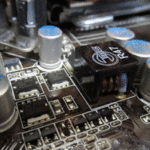2024-02-22 NASA
<関連情報>
- https://science.nasa.gov/missions/webb/webb-finds-evidence-for-neutron-star-at-heart-of-young-supernova-remnant/
- https://www.science.org/doi/10.1126/science.adj5796
超新星1987A残骸のコンパクトな天体からの電離放射線による輝線 Emission lines due to ionizing radiation from a compact object in the remnant of Supernova 1987A
C. FRANSSON , M. J. BARLOW , P. J. KAVANAGH , J. LARSSON , […], AND B. VANDENBUSSCHE
Science Published:22 Feb 2024
DOI:https://doi.org/10.1126/science.adj5796

Editor’s summary
The nearby supernova SN 1987A was visible to the naked eye, and its evolution has been observed over the ensuing decades. The explosion is thought to have produced a neutron star or black hole, but none has been directly detected. Fransson et al. observed a remnant of SN 1987A using near- and mid-infrared integral field spectroscopy. They identified emission lines of ionized argon that appear only near the center of the remnant. Photoionization models show that the line ratios and velocities can be explained by ionizing radiation from a neutron star illuminating gas from the inner parts of the exploded star. —Keith T. Smith
Abstract
The nearby Supernova 1987A was accompanied by a burst of neutrino emission, which indicates that a compact object (a neutron star or black hole) was formed in the explosion. There has been no direct observation of this compact object. In this work, we observe the supernova remnant with JWST spectroscopy, finding narrow infrared emission lines of argon and sulfur. The line emission is spatially unresolved and blueshifted in velocity relative to the supernova rest frame. We interpret the lines as gas illuminated by a source of ionizing photons located close to the center of the expanding ejecta. Photoionization models show that the line ratios are consistent with ionization by a cooling neutron star or a pulsar wind nebula. The velocity shift could be evidence for a neutron star natal kick.



